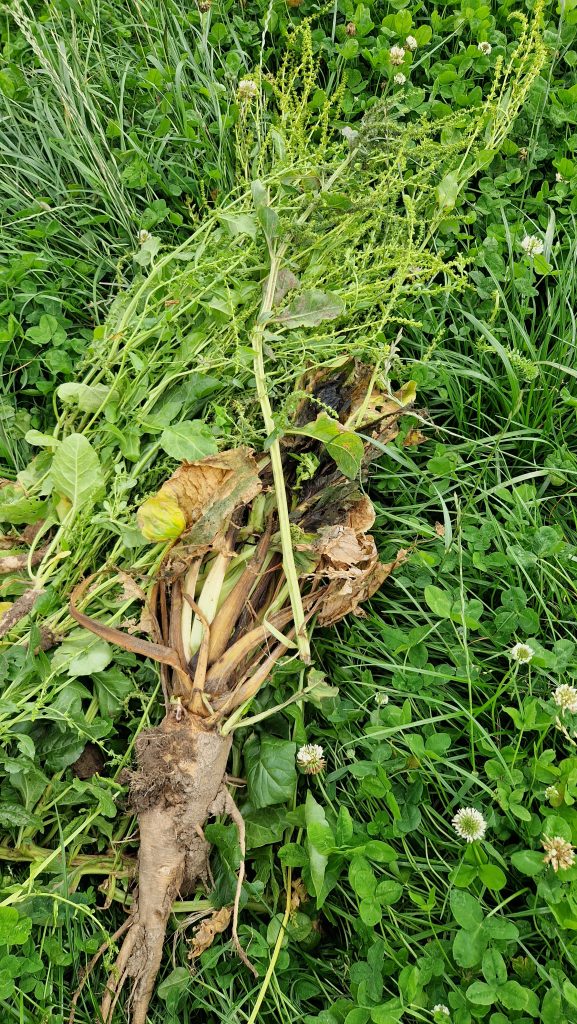Bolters (stocklöpare på svenska) are sugar beet plants that go reproductive in the first year after sowing.
In commercial production of sugar beet for sugar, bolters are a problem for two main reasons: the roots do not grow as well as those of plants are still vegetative; and bolters produce seed, which leads to weed beets, which reduces the productivity of field and can lead to other issues. Of course, in seed production operations, all you want are bolters.
The ideal number of bolters per hectare is zero: good management is to remove them from the field, so not only is there lost production from bolters, but also a cost in removing them. The economic threshold is given, as a rule of thumb, as 200 / ha (ca. 0.2% of all plants).

The physiological process that leads to bolting is vernalisation. Google that for a good description, but it is basically the plant being told to go reproductive owing to a given length of time within a certain temperature range. As sugar beet is a biennial plant, it is basically the plants way of knowing that it is in its second year of life – it has been through the cold of a winter – so should produce seeds, then die.
NBR AND BOLTERS
NBR runs the national bolting risk trials for both Denmark and Sweden. All varieties permitted for sale in these two countries will have been through the bolting trial and deemed acceptable. A variety will be excluded from the national variety lists if it tends to bolt at a low number of accumulated vernalisation hours. Put another way, if there are a relatively high number of bolters at 120 vernalisation hours, a variety will be excluded. If a variety passes this test, but has a relatively high number at 130 vernalisation hours, it will be marked as a sensitive (but acceptable) variety.
The model of vernalisation hours used at NBR was originally adopted from the UK. The model aggregates vernalisation hours for every hour that is between 0 and 12 deg C. The form of the model is basically an inverted quadratic equation, with the worst temperature/ most vernalisaiton hours occurring at 6 deg C.
REPORTS
The annual summary of bolting risk is given in the 4th edition of Betodlaren every year.